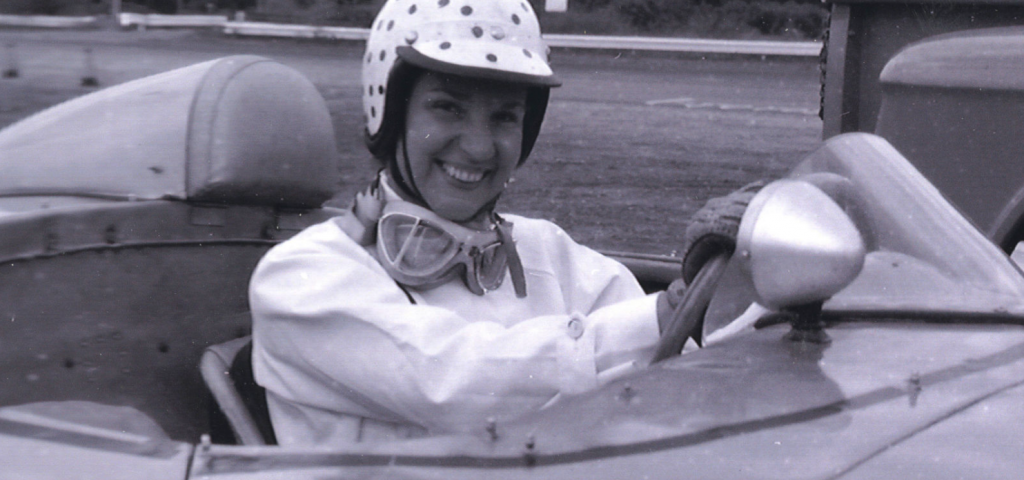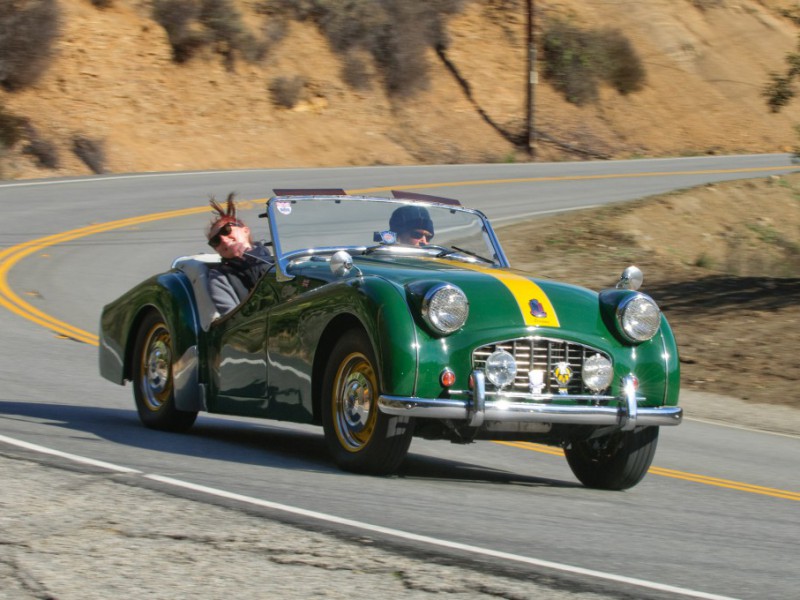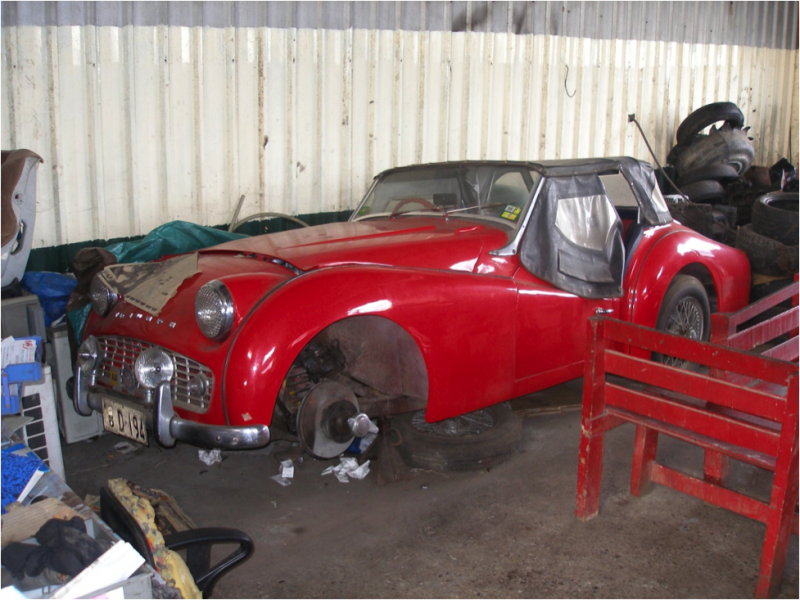Denise McCluggage began her fascination with automobiles as a six-year-old when she spotted an Austin Seven parked on the street near her house in Kansas. Not surprisingly, she soon asked Santa for one just like it. As a young girl she was smart and independent, choosing to leave home for the West Coast at 17. She enrolled at Mills College in the Bay Area and graduated Phi Beta Kappa before taking a job as a reporter at The San Francisco Chronicle. There was always a Forrest Gump quality to her life, as she crossed paths with many legendary figures of the 20th century who found her a bright light in a world filled with dim bulbs. While in San Francisco, Dave Brubeck—a downstairs neighbor—used her piano to practice before forming his quartet and later she convinced Miles Davis to purchase his first Ferrari. Reputed to have broken Steve McQueen’s heart when their relationship ended, she eventually married—and later divorced—Michael Conrad from Hill Street Blues.
A visit to Kjell Qvale’s dealership in San Francisco would change her life. While there, Denise saw an MGTC that she “had to possess—had to!” Not content with leisurely drives along the coast, Denise was determined to go racing in that MG, which was followed by others and then a Jaguar XK140. She covered sports for The Herald Tribune, where she decided participation was the key to understanding competition. Denise convinced her editors that since female journalists were banned by most tracks from interviewing race drivers, the only way to get the job done was to race alongside them and do her work in the pits. In the late ’50s a female racecar driver was an anomaly, so rare that she appeared on an episode of To Tell the Truth in 1959 to discuss her work behind the wheel.
Despite her success on the track, there was resistance to her presence at the highest levels. Selected to run at the 24 Hours of Le Mans in 1958 by Ferrari legend Luigi Chinetti, her ride was rejected by the FIA, which ruled that women were not invited to the iconic race. Even other drivers were hesitant to accept her presence on the track. Eventually her skill and charm would win them over. There is a picture of Denise from the early ’60s surrounded by a coterie of the greatest drivers of all time—Juan Manuel Fangio, Stirling Moss, Pedro Rodriguez, Innes Ireland and Ronnie Bucknum, with Phil Hill just out of frame—and they seem enraptured by her presence.
Denise wasn’t a great female racing driver; she was a great racing driver irrespective of gender. She won the GT Class at the 12 Hours of Sebring in a Ferrari 250 and scored another class win at the Monte Carlo Rally in a Ford Falcon. She raced Jaguars, Oscas and Porsches with great success, including a 5th overall at the 1960 Watkins Glen Grand Prix. Denise behind the wheel was a force to be reckoned with; she drove open-wheeled cars, sports cars and prototypes and excelled on road courses and the rally circuit. She raced for Briggs Cunningham and the GM, Ford, Rover and Porsche factory teams on an equal footing with the guys.
Most of us remember Denise not for her racing, however, but for her unsurpassed coverage of the sport. She would found the predecessor to Autoweek and write for both Car and Driver and Road & Track. Her words would earn her several awards for literary achievement, as well as the singular honor of being the only journalist inducted into the Automotive Hall of Fame. In 1994, she published By Brooks too Broad for Leaping about a lifetime with cars. It should be required reading for any automotive enthusiast since her wit and insight show up in every printed word.

Behind the wheel—and in life—Denise continued to speed even as she entered her final years. She was a fixture on the banquet circuit and was a valued speaker at classic car events around the country, where she entertained with her stories and inspired by her example. Many times we were paired to speak at events where I would introduce her and then lead a vigorous Q & A session from the attendees. Looking at the audience as she spoke, there were always dozens of mouths open in amazement at the wonder that was her life. Thankfully, I spent time with Denise at her home in Santa Fe, New Mexico, shortly before she passed away on May 6, 2015. If she knew the end was near she forgot to tell me. We made plans for the summer, spoke about cars and rummaged through some old photographs. She also took the time to share stories that I hadn’t heard before and then she laughed that McCluggage laugh and retired to nap in her chair.
The last story she told me was a real doozy and maybe I’ll share it sometime. She lived a life that most of us would envy and we are better for having had her in the world. Thanks Denise, for everything.
By Johnny Oversteer








'A Driven Life' has 1 comment
October 9, 2015 @ 8:24 am Doug Flaherty
The two drivers in the front-bottom row, are as follows, on the left, Roger Ward (of Indianapolis 500 fame), and on the right, Jack Flaherty (3 time champion sprint car driver and later a road race driver).